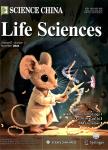Protective mechanism of desiccation tolerance in Reaumuria soongorica: Leaf abscission and sucrose accumulation in the stem
Protective mechanism of desiccation tolerance in Reaumuria soongorica: Leaf abscission and sucrose accumulation in the stem作者机构:1. School of Life Sciences Lanzhou University Lanzhou 730000 China 2. Cold and Arid Regions Environmental and Engineering Research Institute Chinese Academy of Sciences Lanzhou 730000 China
出 版 物:《Science China(Life Sciences)》 (中国科学(生命科学英文版))
年 卷 期:2007年第50卷第1期
页 面:15-21页
核心收录:
学科分类:09[农学] 0903[农学-农业资源与环境]
基 金:the Program of the Research of Vegetation Restoration in Arid Areas of Lanzhou (Grant No. 03-2-27) the National Natural Science Foundation of China (Grant No. 30270243)
主 题:Reaumuria soongorica desiccation photosynthesis sucrose water use efficiency leaf abscission
摘 要:Reaumuria soongorica (Pall.) Maxim., a perennial semi-shrub, is widely found in semi-arid areas in northwestern China and can survive severe desiccation of its vegetative organs. In order to study the protective mechanism of desiccation tolerance in R. soongorica, diurnal patterns of net photosynthetic rate (Pn), water use efficiency (WUE) and chlorophyll fluorescence parameters of Photosystem II (PSII), and sugar content in the source leaf and stem were investigated in 6-year-old plants during progressive soil drought imposed by the cessation of watering. The results showed that R. soongorica was char-acterized by very low leaf water potential, high WUE, photosynthesis and high accumulation of sucrose in the stem and leaf abscission under desiccation. The maximum Pn increased at first and then de-clined during drought, but intrinsic WUE increased remarkably in the morning with increasing drought stress. The maximal photochemical efficiency of PSII (Fv/Fm) and the quantum efficiency of noncyclic electric transport of PSII(ΦPSII) decreased significantly under water stress and exhibited an obvious phenomenon of photoinhibition at noon. Drought stressed plants maintained a higher capacity of dis-sipation of the excitation energy (measured as NPQ) with the increasing intensity of stress. Conditions of progressive drought promoted sucrose and starch accumulation in the stems but not in the leaves. However, when leaf water potential was less than –21.3 MPa, the plant leaves died and then abscised. But the stem photosynthesis remained and, afterward the plants entered the dormant state. Upon re-watering, the shoots reactivated and the plants developed new leaves. Therefore, R. soongorica has the ability to reduce water loss through leaf abscission and maintain the vigor of the stem cells to survive desiccation.



